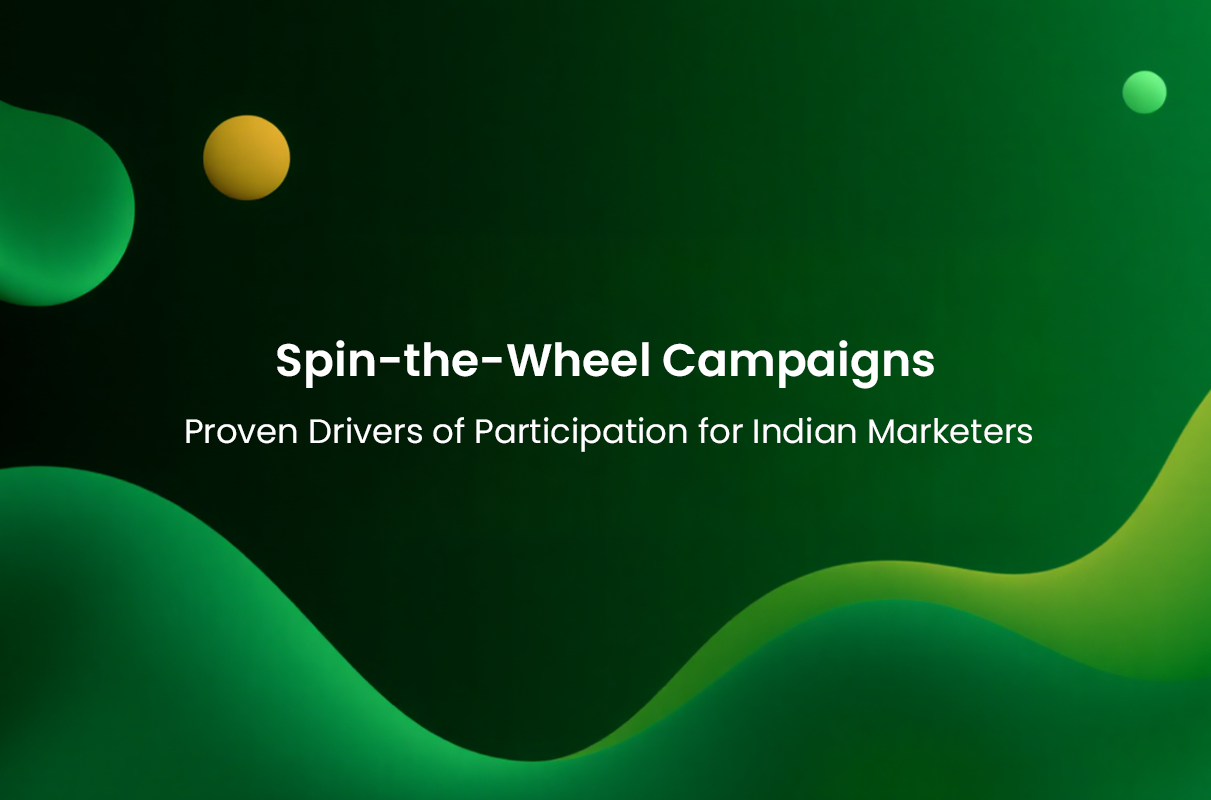
Spin-the-Wheel Campaigns: Proven Drivers of Participation for Indian Marketers
Explore how spin-the-wheel campaigns boost engagement and loyalty in India with instant rewards and personalized experiences.
Spin-the-Wheel Campaigns: Proven Drivers of Participation for Indian Marketers
Spin-the-wheel campaigns have emerged as highly effective tools for consumer promotions, loyalty programs, and channel partner incentives in India. Between 2024 and 2026, they have gained traction due to their dynamic engagement features and ability to deliver instant gratification, making them a favored tactic among B2B marketers, trade leaders, and HR/channel incentive planners.
Why Spin-the-Wheel Campaigns Drive High Engagement
Data from recent Indian market campaigns indicate spin-the-wheel models consistently achieve participation rates of 30–40%, outperforming traditional static rewards like coupons or point systems. This high engagement is primarily due to the game’s element of chance combined with instant rewards, which appeals to consumer psychology and the desire for immediate benefits. The perceived fairness and transparency of spin-the-wheel odds also foster trust, encouraging repeat participation from consumers and channel partners alike. For Indian brands, leveraging digital platforms such as mobile apps, WhatsApp, and QR codes at points of sale facilitates seamless omnichannel engagement, even in tier-2 and tier-3 cities.
Trends in Reward Types and Campaign Execution
Successful spin-the-wheel campaigns integrate diverse rewards that cater to varied audiences. Popular incentives include instant cashback, UPI credits, mobile recharges, shopping vouchers, and wellness gifts such as health checkups and fitness app subscriptions. Wellness and experiential rewards see increased uptake among younger demographics, especially Gen Z and young professionals. On the B2B front, spin-the-wheel mechanics have proven their worth in dealer and channel partner programs. Incentivizing sales targets with gamified rewards can boost order frequency by 20–45%, moving beyond conventional slabs-based incentives. This not only drives higher sales but also enhances partner loyalty. Personalization is an emerging trend where campaign platforms tailor wheel odds and rewards based on participant history and segmentation. This strategic approach ensures sustained engagement and higher campaign ROI.
RewardPort Perspective and Solutions
At RewardPort, we understand the critical balance between fun and strategic objectives in spin-the-wheel campaigns. Our gamification engine supports over 100 branded game formats, including spin-the-wheel, enabling brands to run seamless, engaging campaigns with robust tracking and analytics. Moreover, our Reward Catalog offers a vast selection of rewards across travel, entertainment, food, health & wellness, essentials, and gift vouchers—ensuring the prize mix aligns perfectly with target audiences. For example, integrating movie tickets and pizza vouchers appeals to younger consumers, while travel and dining vouchers resonate with family segments. Our case studies reflect these insights: channel partner programs using spin-the-wheel mechanics have shown measurable uplifts in engagement and sales. By integrating instant digital rewards with personalized redemption experiences, RewardPort clients see stronger loyalty and repeat participation.
Regulatory Considerations and Best Practices
Brands must ensure compliance with Indian regulations by structuring spin-the-wheel campaigns without participation fees and linking spins to legitimate purchase or engagement activities. Transparent communication regarding odds and rewards is essential to maintain consumer trust and avoid perceptions of gambling. Brands are encouraged to leverage data-driven insights from campaign analytics to refine audience segmentation and optimize reward allocation, driving consistent program improvement.
Spin-the-wheel campaigns offer a proven, dynamic method to increase participation and loyalty in diverse Indian market segments. When executed with a balanced rewards strategy and supported by digital engagement platforms like RewardPort, these campaigns deliver measurable uplift in customer and channel partner engagement, translating directly into business growth.
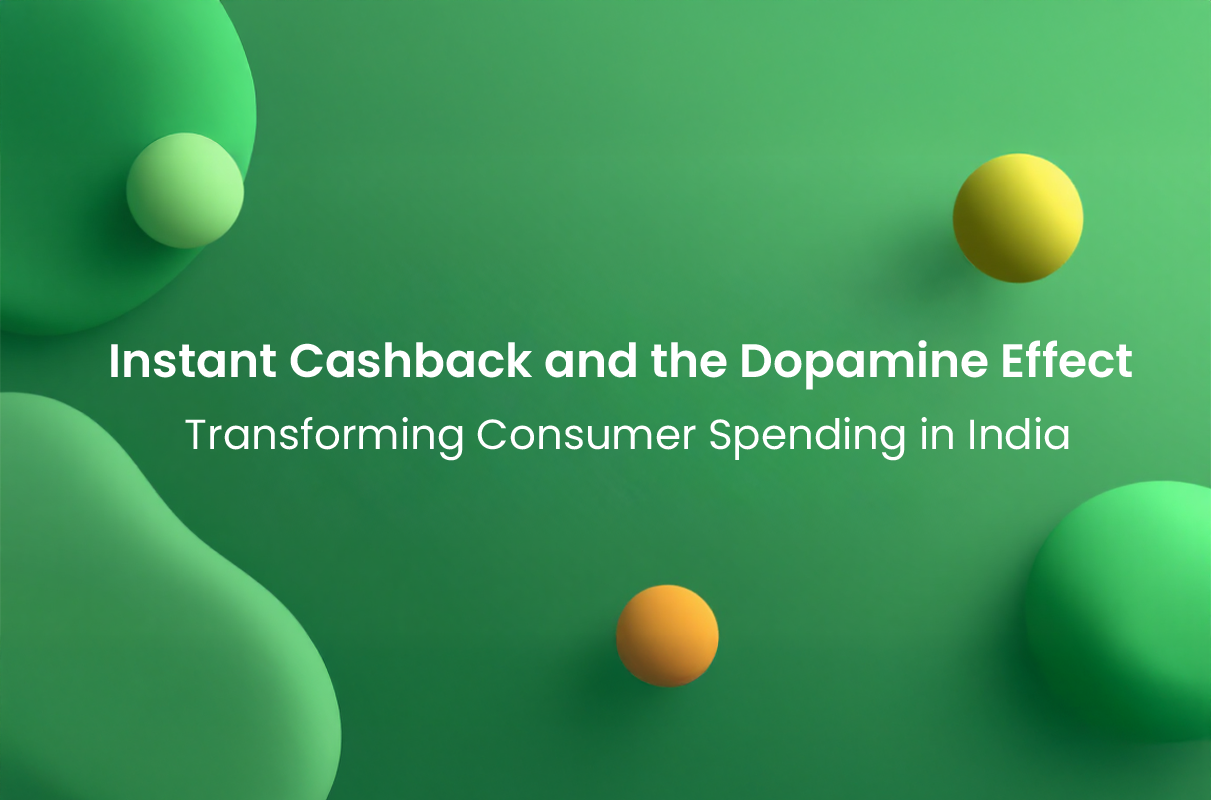
Instant Cashback and the Dopamine Effect: Transforming Consumer Spending in India
Explore how instant cashback leverages dopamine-driven rewards to boost consumer spending, loyalty, and engagement in India’s dynamic market.
Instant Cashback and the Dopamine Effect: Transforming Consumer Spending in India
Instant cashback has emerged as a powerful tool in India’s consumer promotions and loyalty programs, deeply influencing spending behavior through the neurochemical dopamine effect. As RewardPort, India’s specialist in consumer promotions, channel incentives, and employee rewards, we recognize that the immediacy of cashback taps into consumers’ desire for instant gratification, enhancing both engagement and loyalty. This article explores the underlying psychology, market trends, and RewardPort’s strategic approach to harnessing instant cashback for impactful business outcomes.
The Dopamine Effect: Why Instant Cashback Works
Instant cashback generates a strong dopamine response — a neurotransmitter associated with pleasure and reward — providing an immediate sense of financial gain and satisfaction. This effect encourages consumers to make more frequent purchases, often increasing transaction sizes and brand loyalty. The psychological gratification of instant rewards creates a positive feedback loop, motivating consumers to engage repeatedly with brands offering these incentives.
Market Context: Rapid Growth of Instant Cashback in India
The Indian cashback market is on a robust growth trajectory. Valued at approximately USD 7.6 billion in 2024, it is forecasted to nearly double to USD 14.3 billion by 2029, growing at a compound annual growth rate (CAGR) of 13.4%. This growth reflects expanding digital payment adoption, rising disposable incomes, and increasing consumer preference for value-driven shopping experiences. The number of online shoppers is expected to exceed 270 million by 2024, growing at over 22% annually, further fueling cashback program participation.
Key Sectors and Use Cases
Instant cashback is widely deployed across various sectors: – Consumer Promotions: Platforms like Paytm and Flipkart leverage instant cashback during festivals and sales, driving spikes in transaction volumes and brand engagement. – Loyalty Programs: Credit cards from leading banks offer up to 5% instant cashback, incentivizing repeat card usage and enhancing customer lifetime value. – Channel and Partner Incentives: Businesses use instant cashback to energize channel partners and dealers, improving sales and inventory movement. – Experiential and Wellness Rewards: Integrated cashback rewards now extend to experiences like travel, dining, and health services, appealing to the aspirational Indian consumer.
RewardPort’s Perspective: Crafting Effective Instant Cashback Campaigns
At RewardPort, we design instant cashback campaigns that balance dopamine-driven engagement with strategic marketing goals — from acquisition to loyalty and referral. Our plug-and-play cashback engine allows brands to customize reward structures, ensuring seamless redemption and real-time gratification. By integrating data-driven personalization, we help our clients optimize cashback offers that resonate uniquely with diverse customer segments. Our case studies reveal impactful outcomes: a leading food brand used QR inside-pack cashback with assured rewards plus a high-value appliance draw, significantly boosting repeat purchases. Another consumer electronics campaign combined assured cashback with premium gifts, accelerating stock movement during festive seasons.
Trends Shaping Cashback Programs 2025 and Beyond
– Personalization: Behavioral segmentation enhances relevance and increases redemption rates. – Omnichannel Integration: Bridging offline and online presence ensures wider and more frequent consumer touchpoints. – Experiential Rewards: Consumers increasingly prefer cashback linked to travel, dining, and wellness, which strengthen emotional brand connections. – Dealer & Channel Engagement: Tailored instant cashback schemes for partners improve incentivization and business outcomes.
Instant cashback in India is more than just a financial incentive — it’s a psychological trigger that unleashes the dopamine-driven reward response, boosting consumer spending, loyalty, and partner engagement. By harnessing this effect, RewardPort empowers brands and businesses to create compelling, outcome-driven campaigns that align with evolving market dynamics and consumer expectations.

Instant Rewards: Unlocking the Power of ‘Now’ in Consumer Psychology for Indian Marketers
Explore why instant rewards drive consumer engagement in India. Learn how RewardPort’s solutions leverage ‘now’ to boost loyalty, sales, and channel incentives.
Instant Rewards: Unlocking the Power of ‘Now’ in Consumer Psychology for Indian Marketers
In today’s fast-paced Indian market, the value of instant rewards—immediate incentives delivered at the point of engagement—has risen dramatically. Consumers increasingly expect gratification within moments, not days or weeks. This shift is reshaping consumer psychology and driving new dynamics in loyalty programs, promotions, and channel partner incentives. For B2B marketers, trade leaders, and HR/channel heads, understanding why “now” matters can unlock powerful engagement and competitive advantage.
The Psychology Behind Instant Rewards
Psychologically, instant rewards leverage the primal human desire for instant gratification, creating immediate emotional impact. In India especially, where digital adoption and mobile commerce are booming, consumers exhibit heightened impulsivity and preference for quick results. Studies show that the “10-minute delivery” model in quick commerce (Q-commerce) is a tangible reflection of this mindset, prioritizing speed over price sensitivity.
This instant gratification triggers dopamine release, reinforcing positive buying behavior and increasing repeat purchase likelihood. Social media amplification, scarcity messaging, and influencer endorsements intensify this effect by creating FOMO (fear of missing out) and emotional urgency that prompt faster decisions.
Trends Shaping Instant Reward Campaigns in India
Loyalty programs are evolving from conventional points-based schemes to highly personalized, AI-driven, instant reward models. Leading Indian platforms like Swiggy, Flipkart, and Paytm have revamped their reward structures to emphasize cashback, digital vouchers, and experiential perks that consumers can redeem immediately.
Cashback campaigns deliver concrete, instant value, rapidly outpacing delayed reward schemes. Integration with mobile wallets and UPI ensures frictionless redemption, driving strong consumer satisfaction and retention. On the channel partner front, instant digital rewards and wellness incentives motivate dealer participation effectively, enabling businesses to meet sales targets faster.
RewardPort’s Perspective: Delivering Instant Value at Scale
At RewardPort, our solutions are designed to harness the power of instant rewards tailored to Indian consumers and business ecosystems. Our plug-and-play modules, such as Freebucks—combining point accumulation with instant redemption—perfectly align with the now-first consumer mindset.
Our AI-powered personalization tools optimize reward delivery timing and relevance, contributing in some campaigns to a repeat purchase uplift nearing 27%. Whether through cashback engines, gamification with branded digital games, or WhatsApp-based instant win flows, RewardPort enables brands to create moments of delight and immediate value.
RewardPort’s extensive reward catalog—featuring movie tickets, food vouchers, travel experiences, wellness services, and multi-brand gift vouchers—caters to diverse Indian demographic segments. This breadth empowers marketers to match instant rewards with customer preferences closely, deepening engagement and loyalty.
Case Study Insights
Leading brands enabled by RewardPort have successfully driven up sales and engagement by embedding instant rewards into their campaigns. For example, a consumer goods campaign combining assured cashback with high-value draws saw significant repeat purchase and penetration growth. Channel partner incentive programs leveraging instant digital rewards achieved rapid dealer activation and sustained trade engagement.
Future Outlook: Instant Rewards and Beyond in 2026+
Looking ahead, instant rewards will become even more sophisticated through AI-enhanced hyper-personalization and integration with emerging tech like AR/VR experiential incentives. The consumer’s expectation for seamless, immediate value will continue to accelerate, particularly among India’s digitally native youth and urban families.
Marketers and trade leaders who invest in instant gratification-driven programs will not only capture attention and loyalty but also unlock higher lifetime value and channel advocacy in India’s competitive markets.
Instant rewards are not just a trend but a fundamental shift in consumer psychology that Indian marketers must embrace. At RewardPort, we provide the tools, insights, and rewards catalog to make “now” a powerful ally in building engagement, sales, and loyalty. By prioritizing instant gratification within your promotions and channel incentives, you can meet evolving consumer and partner expectations head-on and build lasting business advantage through 2026 and beyond.
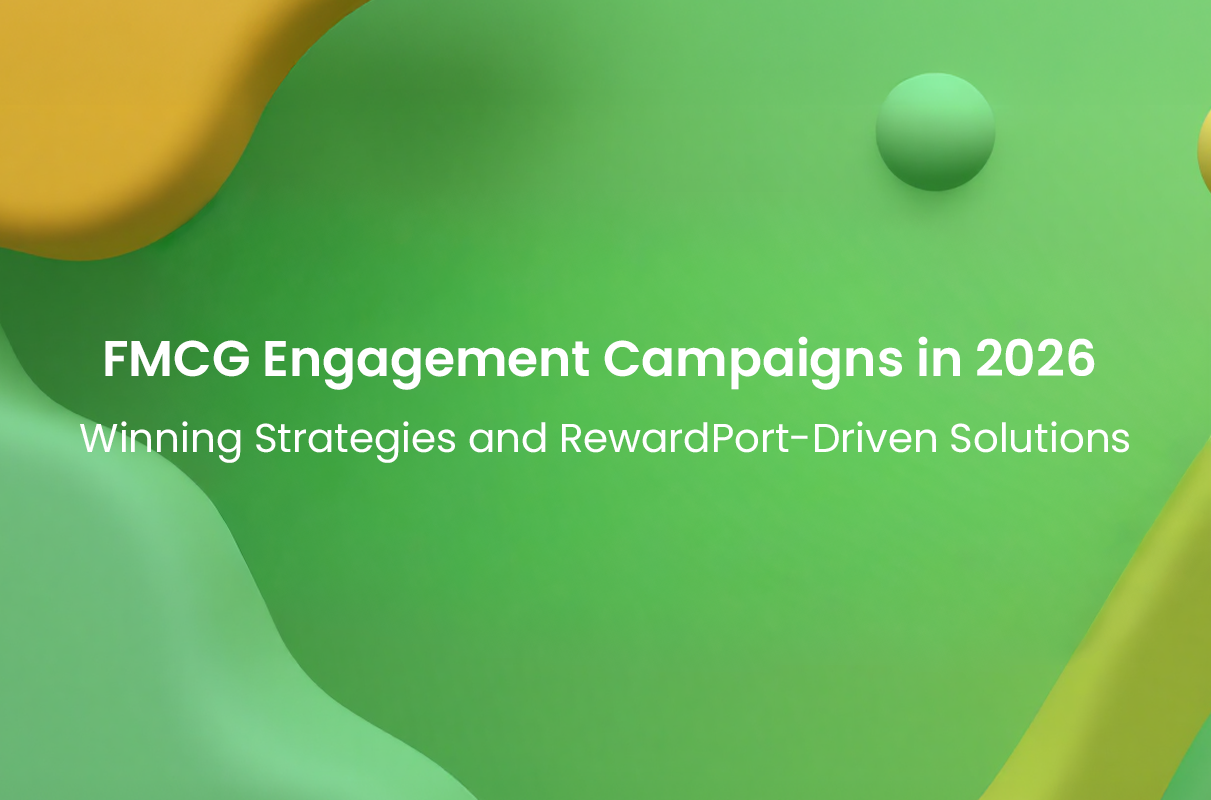
FMCG Engagement Campaigns in 2026: Winning Strategies and RewardPort-Driven Solutions
Explore top FMCG engagement campaigns in India for 2026 and how RewardPort’s loyalty and incentive solutions drive impactful consumer and channel rewards.
FMCG Engagement Campaigns in 2026: Winning Strategies and RewardPort-Driven Solutions
India’s FMCG sector in 2026 is marked by a dynamic shift towards digitally enabled, omnichannel engagement campaigns that harness personalized rewards and robust channel incentives. As consumption patterns evolve across urban and rural markets, brands that excel are those integrating technology-driven loyalty programs with compelling experiential rewards. RewardPort stands at the forefront of this transformation, powering campaigns that connect deeply with consumers, trade partners, and employees alike.
The ongoing growth in digital ad spend, expected to represent over 60% of FMCG marketing budgets by 2026, reflects brands’ commitment to mobile-first, video-rich content alongside traditional platforms. This omnichannel approach strengthens brand recall and maximizes reach across India’s diverse population. RewardPort’s turnkey solutions — from data-driven points loyalty and cashback engines to gamification and experiential rewards catalogues — align perfectly to activate these strategies effectively.
What Works in 2026 (Playbook)
Engagement campaigns that succeed in 2026 share several core traits:
• Omnichannel Integration: Combining TV, digital, print, and mobile amplifies engagement rates up to 35% higher than single-medium campaigns. RewardPort enables seamless coordination across channels with plug-and-play loyalty modules.
• Personalized Loyalty & Instant Gratification: Data-driven segmentation fuels instant cashback, tiered multipliers, and digital wallet redemptions that retain and upsell consumers.
• Channel Partner Incentives: Dealers and retailers gain from tailored point programs, wellness benefits, and curated experiential rewards to boost distribution and motivation.
• Experiential Rewards: Wellness retreats, holiday packages (via RewardPort’s VacPac and AirPac catalogs), and entertainment vouchers foster emotional loyalty beyond transactional benefits.
• Influencer & Celebrity Engagement: Integration with influencer campaigns and celeb endorsements elevates trust and reach—strategies supported by RewardPort’s digital backend for instant reward delivery.
For FMCG marketers and trade leaders, this approach translates into measurable uplifts in repeat purchase, channel activation, and brand advocacy.
RewardPort Case Studies and Solutions in Action
While the 2026-specific FMCG case data is emerging, RewardPort’s ongoing partnerships reveal the effectiveness of its campaign models:
• Multi-Channel Loyalty for a Leading Personal Care Brand: Implementing point accrual combined with tiered rewards boosted repeat purchases by over 25%, leveraging RewardPort’s Freebucks points system with instant redemption.
• Channel Partner Incentives for a Food FMCG Brand: A dealer loyalty program offering quarterly redemption points, wellness vouchers, and merchandise rewards resulted in heightened trade engagement.
• Scratch & Win Campaign with Assured Prizes: For a prominent snack manufacturer, combining assured food vouchers and grand holiday prizes (from RewardPort’s curated catalog) stimulated a 20% uplift in consumer trial and repeat purchase during festive seasons.
• Gamified Referral Program: A beverage brand utilized RewardPort’s gamification engine alongside referral rewards yielding rapid network growth and acquisition lift.
Why RewardPort Is the Partner of Choice
RewardPort’s comprehensive plug-and-play modules provide FMCG brands with the agility to deploy complex campaigns rapidly while maintaining rigorous tracking and redemption transparency. The extensive rewards catalog caters to diverse consumer preferences—from OTT and movie tickets popular with youth to multi-brand vouchers and wellness experiences favored in families and trade partners. Real-time analytics enable course correction and optimization for maximum ROI.
In a market where engagement campaigns must balance fun, attainability, and strategic impact, RewardPort delivers proven models that adapt to evolving consumer behaviour and channel dynamics.
FMCG engagement campaigns in India for 2026 are defined by a blend of digital sophistication, personalized loyalty, and experiential incentives. Brands that integrate these elements effectively benefit from enhanced consumer retention and energized channel partners. RewardPort’s full-suite solutions—spanning loyalty programs, cashback, gamification, and multi-category rewards—equip FMCG marketers and trade leaders to meet these challenges head-on with impactful, measurable campaigns. As the industry moves forward, partnering with RewardPort ensures that engagement strategies remain innovative, scalable, and consumer-centric.
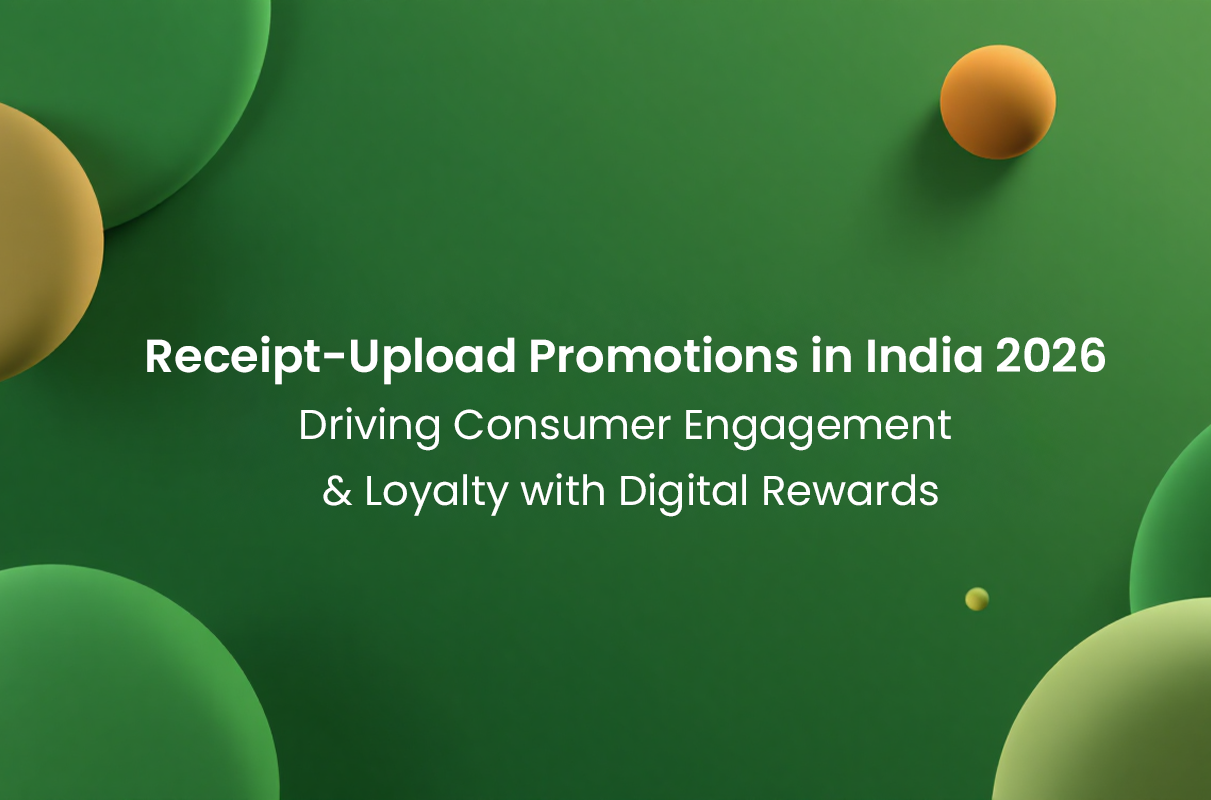
Receipt-Upload Promotions in India 2026: Driving Consumer Engagement and Loyalty with Digital Rewards
Explore receipt-upload promotions in India 2026, their growing consumer adoption, and how RewardPort enables seamless, rewarding campaigns with digital-first solutions.
Receipt-Upload Promotions in India 2026: Driving Consumer Engagement and Loyalty with Digital Rewards
Receipt-upload promotions—where consumers upload proof of purchase receipts digitally to unlock rewards—are rapidly gaining traction across India’s consumer market in 2025 and beyond. This proven activation leverages India’s soaring digital payments ecosystem and widespread smartphone adoption to engage shoppers, deepen loyalty, and incentivize repeat purchases. From FMCG brands to retail chains, these promotions are evolving into multi-channel, omnipresent campaigns that connect physical shopper behavior to digital rewards instantly.
Context and Industry Trends Shaping Consumer Adoption
The last few years have seen explosive growth in digital payment platforms like UPI, Paytm, Amazon Pay, and others, which now serve as critical enablers for receipt-upload campaigns. India’s urban and increasingly rural consumers are comfortable scanning receipts via apps or uploading photos through WhatsApp-led flows, expecting seamless and immediate rewards. According to recent market data, promotions combining cashback, discount codes, and experiential rewards dominate sales advertising, often accounting for over 50% of activations in print and digital promotion spaces by late 2023. This mix resonates well with consumers seeking both instant gratification and aspirational prizes. Moreover, brands are embedding receipt-upload mechanics into loyalty programs to convert one-time buyers into repeat customers. Channel partners and dealers are also incentivized via digital credits or spiffs to promote these campaigns at the point of sale, creating a robust ecosystem that ties consumer behavior with partner engagement. This omnichannel integration ensures broader adoption and sustained momentum into 2026.
RewardPort’s Perspective and Execution Expertise
At RewardPort, we recognize receipt-upload promotions as a cornerstone of India’s future-facing customer engagement strategies. Our plug-and-play modules enable brands to deploy campaigns that drive acquisition, repeat purchase, and up-sell by combining instant cashback, digital vouchers, and experiential rewards such as spa visits or movie tickets—drawing from our comprehensive rewards catalog. Our solutions emphasize ease of participation through mobile apps and WhatsApp, supported by robust invoice validation backend systems that ensure fraud mitigation and data accuracy. By integrating dealer and channel incentives alongside consumer rewards, RewardPort fosters a seamless ecosystem that magnifies impact across the value chain. Case studies within the industry reveal compelling uplifts: FMCG brands partnering with payments players have recorded over 20% increases in repeat purchases during receipt-upload campaigns that reward digital cashback instantly. Retailers leveraging experiential tiers from RewardPort’s entertainment catalog have seen elevated engagement and footfall, particularly in premium urban segments.
Key Consumer Adoption Drivers for 2026 and Beyond
– Digital Payments Penetration: With UPI transactions exceeding 100 billion annually, digital receipt uploads are frictionless and widely accessible. – Omnichannel Loyalty Integration: Combining online and offline purchase data through receipts strengthens personalized marketing. – Reward Diversity: Consumers gravitate towards instant cashback, multi-brand voucher catalogs, and experiences, all easily redeemable. – Channel Partner Engagement: Incentivizing dealers and retailers accelerates adoption at grassroots levels. – Mobile-First and Vernacular Accessibility: Simplified app and WhatsApp-based uploads drive inclusion across urban and rural areas alike.
Embracing Receipt-Upload Promotions with RewardPort
Receipt-upload promotions represent a dynamic confluence of digital innovation, consumer psychology, and multi-tier incentives within India’s rapidly evolving retail landscape. RewardPort’s expertise in orchestrating such campaigns—leveraging digital-first execution models and a wide-ranging reward catalog—positions brands to thrive in this vibrant space. As adoption accelerates through 2026, marketers embracing these campaigns with precision and agility will unlock significant growth in customer acquisition, loyalty, and channel engagement.
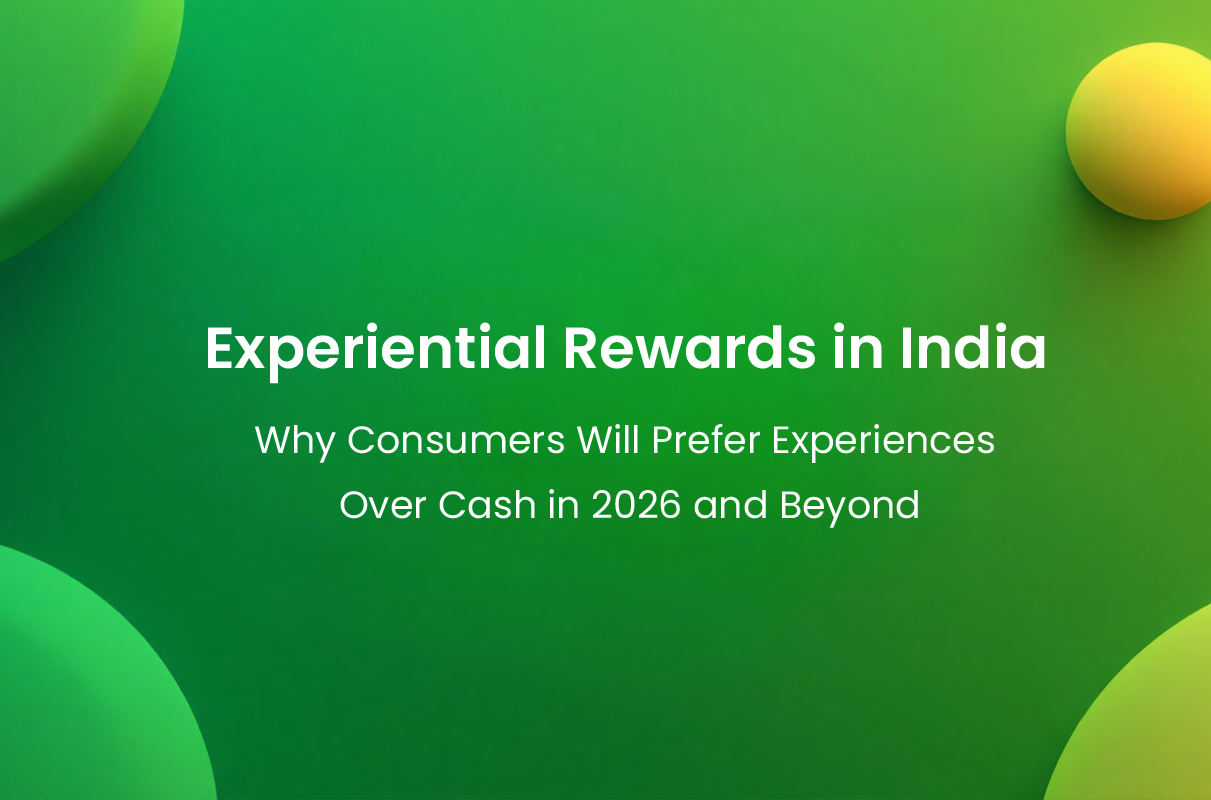
Experiential Rewards in India: Why Consumers Prefer Experiences Over Cash in 2026 and Beyond
Explore why experiential rewards are surpassing cash in popularity in India’s loyalty and incentive programs, driving deeper engagement and brand loyalty.
Experiential Rewards in India: Why Consumers Prefer Experiences Over Cash in 2026 and Beyond
In the evolving landscape of consumer promotions and loyalty programs in India, a marked shift is underway. Consumers increasingly favor experiential rewards—such as travel, wellness experiences, and exclusive events—over traditional cash or cashback incentives. This trend, driven by the desire for memorable and personalized engagement, is reshaping how brands connect with customers, channel partners, and employees in 2026 and beyond.
The Rise of Experiential Rewards in India’s Loyalty Market
The Indian loyalty program market is booming, projected to grow from around USD 4.3 billion in 2025 to an estimated USD 17.1 billion by 2035. This surge is powered by a heightened preference for tech-enabled, AI-driven experiential rewards that provide consumers more than transactional value. For instance, consumers in urban India seek not just discounts but unique moments—like wellness retreats, travel upgrades, or access to premium entertainment—that foster emotional loyalty and a deeper brand connection.
Why Consumers Prefer Experiences Over Cash
Several factors explain this consumer pivot:
– Emotional Engagement: Experiential rewards create lasting memories and social sharing opportunities, which cash cannot deliver.
– Personalization: Tailored experiences that reflect individual tastes and interests feel more valuable and exclusive.
– Wellness and Lifestyle Alignment: Combining digital rewards with wellness offerings such as spa packages or fitness subscriptions resonates strongly with millennial and Gen-Z consumers.
– Social Currency: Experiences offer stories and status symbols that money alone does not provide.
RewardPort’s Perspective: Integrating Experiential Rewards for Business Impact
At RewardPort, our extensive rewards catalog embraces this shift with curated offerings across travel (VacPac, AirPac), entertainment (movie tickets, OTT subscriptions), food, wellness, and cashback options seamlessly integrated into campaigns. Our platform supports innovative execution methods, including gamification, QR scan-to-win, and loyalty tiers, allowing brands to deliver experiential rewards that drive trial, repeat purchase, and deeper loyalty.
Case studies from the Indian market reveal that consumer promotions anchored around experiential rewards—including holiday gift certificates, wellness memberships, and exclusive event access—have shown improved engagement metrics and repeat purchase rates. For channel and dealer incentives, experiential rewards such as sponsored trips and curated experiences outperform traditional cash bonuses in motivating sustained performance and advocacy.
Leveraging Technology and Personalization
RewardPort leverages advanced data analytics and AI-driven personalization to match experiential reward offerings to the consumer profile, maximizing relevance and redemption rates. This approach is proving critical in India’s diverse market, enabling brands to balance aspirational rewards with mass appeal. The emerging trend toward hybrid digital-physical rewards, like app-based bookings for experiences and instant voucher redemption, further strengthens consumer excitement and perceived value.
Experiential Rewards are the Future of Loyalty in India
As India’s loyalty programs mature in this decade, experiential rewards will be central—not just as a gimmick, but as a strategic driver of emotional loyalty, customer lifetime value, and channel partner motivation. Brands that invest in immersive, personalized experiences through platforms like RewardPort will stand out in a crowded market, delivering measurable business impact and building authentic connections with their audiences.
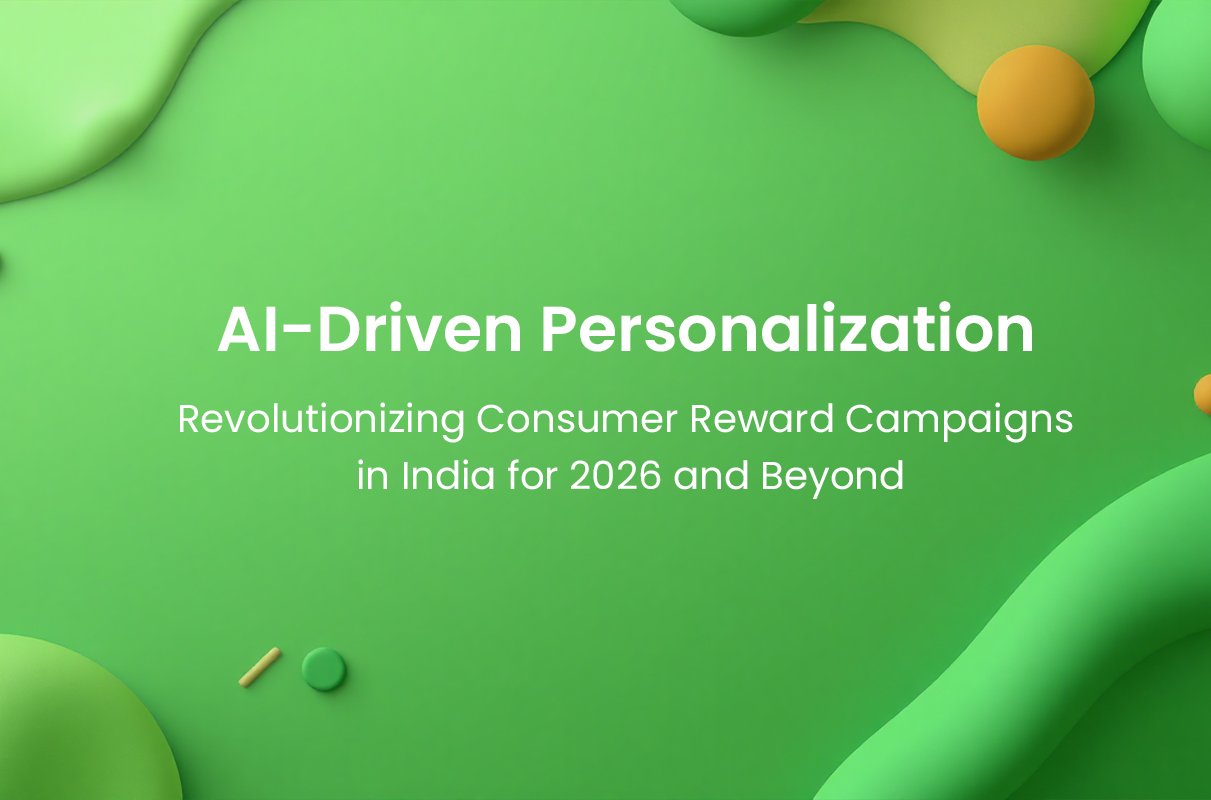
AI-Driven Personalization: Revolutionizing Consumer Reward Campaigns in India for 2026 and Beyond
Explore how AI-driven personalization is reshaping consumer reward campaigns in India with tailored promotions, loyalty programs, and RewardPort solutions.
AI-Driven Personalization: Revolutionizing Consumer Reward Campaigns in India for 2026 and Beyond
AI-driven personalization is rapidly transforming the landscape of consumer reward campaigns in India. With over 95% of Indian consumers now influenced by AI in their purchase decisions, brands are leveraging data analytics and machine learning to offer hyper-personalized rewards that increase engagement, loyalty, and repeat purchases. From digital loyalty programs to cashback campaigns, AI helps marketers reach consumers with relevant incentives that resonate deeply, creating a competitive edge in a diverse and dynamic market.
The Indian Market Landscape and Consumer Expectations
In the India-first context, consumers increasingly expect personalized experiences that reflect their preferences, purchase history, and lifestyle. Reports indicate that 81% of Indian consumers anticipate their favorite brands adopting generative AI for personalization by the end of 2024, pushing brands to innovate rapidly. This trend is especially visible in sectors like FMCG, financial services, and retail, where data-driven reward programs are now standard. AI’s ability to segment customers precisely and deliver instant, contextually relevant rewards enhances customer satisfaction and brand affinity.
Key Trends in AI-Powered Consumer Reward Campaigns
Several emerging trends define AI-driven personalization in consumer campaigns. First, the integration of real-time data analytics enables instant reward decisions tailored to individual behavior, such as AI-powered Scratch & Win or QR Scan to Win campaigns. Second, AI enhances loyalty programs by dynamically adjusting points, tiers, and multipliers based on consumer activity and preferences. Third, AI facilitates hybrid omnichannel experiences combining digital and offline activations, enabling seamless consumer journeys.
Moreover, privacy and data security concerns have led Indian brands to strike a balance between personalization and consumer trust, fostering transparency around data use while delivering value through personalized rewards.
RewardPort’s Perspective and Solutions
At RewardPort, we specialize in crafting AI-powered, tailor-made consumer promotion and loyalty programs uniquely suited for the Indian market. Our plug-and-play modules—such as Freebucks (points and instant redemption), RewardOne (customizable gift voucher engine), and Gamification Engine (with 100+ branded games)—enable brands to deploy sophisticated AI-driven campaigns swiftly and at scale.
We harness data analytics and AI integration to create high-impact campaigns, blending assured rewards like cashback or multi-brand vouchers with experiential travel prizes from our VacPac and AirPac catalogs. This approach delivers measurable results across the full consumer lifecycle: acquisition, trial, repeat purchase, upsell, and loyalty consolidation. For example, our campaigns with leading Indian brands have demonstrated increased consumer engagement and repeat purchase rates through such AI-personalized reward touchpoints.
Case Insights and Outcome Highlights
While respecting confidentiality, RewardPort’s collaborations highlight how AI-personalized campaigns have driven sales uplift and brand loyalty. Initiatives blending AI with instant rewards have increased consumer retention, with some programs seeing a repeat purchase uplift nearing 27%. Our channel and dealer incentive campaigns leveraging AI analytics have also raised trade engagement, showing the broad applicability of personalized reward strategies.
AI-driven personalization in consumer reward campaigns is not just a futuristic concept but a present-day imperative for brands in India. By enabling hyper-personalized, data-backed incentives and seamless redemption experiences, AI fosters deeper consumer connections and stronger brand loyalty. RewardPort’s comprehensive suite of AI-enabled solutions and rich rewards catalog position brands to thrive in 2026 and beyond by meeting evolving consumer expectations with precision and creativity.
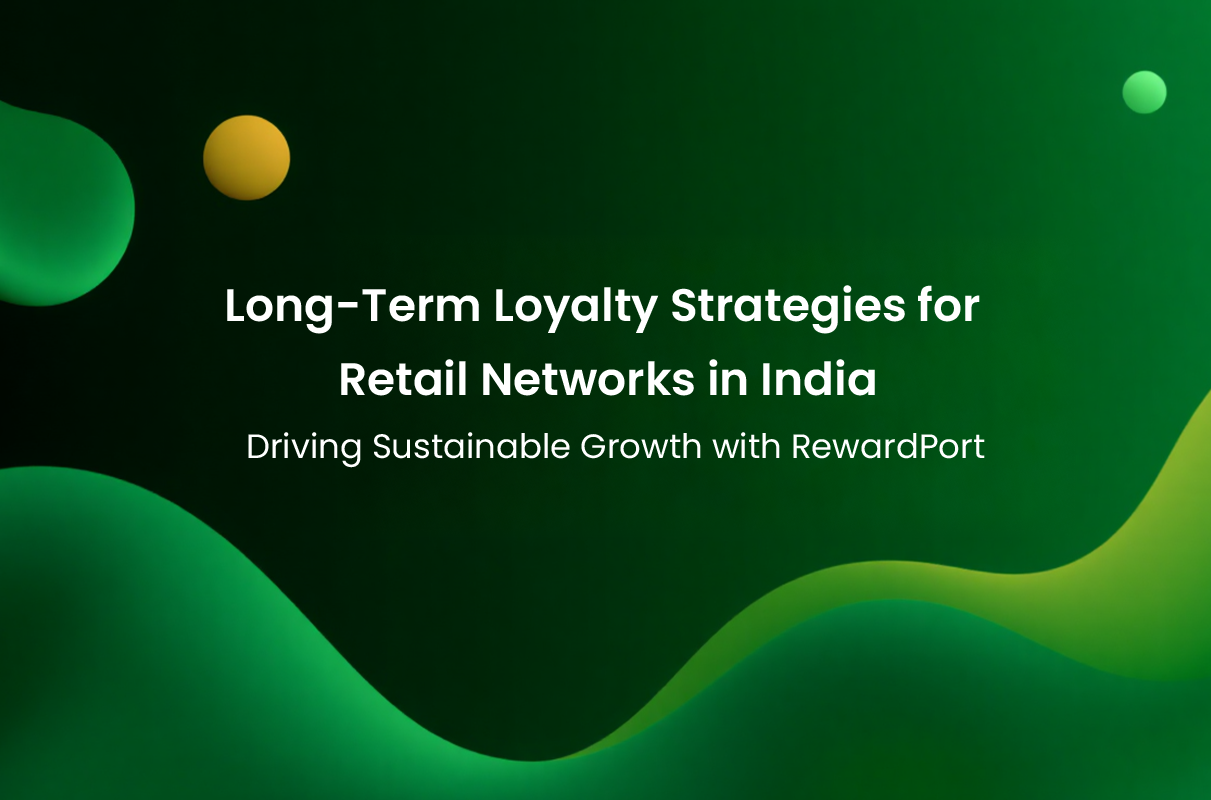
Long-Term Loyalty Strategies for Retail Networks in India: Driving Sustainable Growth with RewardPort
In the fast-evolving Indian retail landscape, fostering long-term customer and channel loyalty has become indispensable for sustainable growth. By 2026, the loyalty market in India is expected to exceed US$3.9 billion, fueled by rising smartphone penetration, digital payment adoption, and shifting consumer expectations. Retailers must implement sophisticated, data-driven loyalty strategies that blend personalization, omnichannel engagement, gamification, and meaningful rewards. RewardPort, as India’s specialist in consumer promotions, loyalty programs, and channel incentives, enables businesses to harness these trends through proven solutions and curated reward catalogs.
Long-term loyalty strategies today center on personalized, mobile-first, and digital-first approaches. Customers crave relevance — programs powered by AI analytics leverage purchase data and behavior patterns to deliver customized offers and rewards. This approach significantly enhances repeat purchase rates and lifetime customer value. RewardPort’s platform facilitates integration with CRM/ERP systems, empowering retailers to automate personalized promotions seamlessly across online and offline channels.
Gamification is another proven driver of engagement. Incorporating digital games such as spin-the-wheel, scratch & win, or branded trivia injects excitement and drives deeper interaction with loyalty schemes. RewardPort’s gamification engine offers over 100 branded games tailored to brand tone and audience that deliver a 50%+ uplift in participation. Coupled with instant gratification rewards like cashback or multi-brand vouchers, these elements cultivate habitual engagement.
Omnichannel loyalty programs are crucial to bridge the offline-online divide, enabling effortless earning and redemption of points or rewards regardless of sales channel. Retailers using such models often see 40% higher program participation. RewardPort’s Channely module supports dealer and channel partner incentive programs with CRM connectivity, optimizing engagement across the distribution network.
The rewards catalog plays a strategic role in driving loyalty. Modern Indian consumers and B2B partners increasingly prefer flexibility and choice—ranging from experiential rewards like travel (VacPac, AirPac), movie tickets (CineRewardz), and dining vouchers to essentials, wellness, and digital subscriptions. RewardPort’s extensive catalog with 150,000+ experience options and thousands of partner outlets allows brands to curate reward mixes that resonate deeply with their target segments.
Sustainability-linked promotions are gaining traction, reflecting growing consumer consciousness in India. Campaigns that incentivize eco-friendly actions such as packaging returns or supporting green products boost brand sentiment and retention. RewardPort has facilitated successful green loyalty initiatives delivering measurable impact on customer engagement.
On the channel side, multi-tiered incentive programs for dealers and partners drive loyalty and sales push effectively. RewardPort’s Channely solution integrates with client ERPs to create milestone-based, tiered rewards that improve payment cycles and strengthen distributor relationships, as seen in multiple client engagements.
In summary, the future of retail loyalty in India demands integrating technology and behavioral insights to create engaging, personalized, omnichannel loyalty ecosystems. RewardPort’s holistic solutions—from AI-based program design and gamification to a rich rewards catalog and channel partner incentives—equip brands to build lasting loyalty. Embracing these strategies will drive sustained growth and competitive advantage in India’s dynamic retail environment through 2026 and beyond.
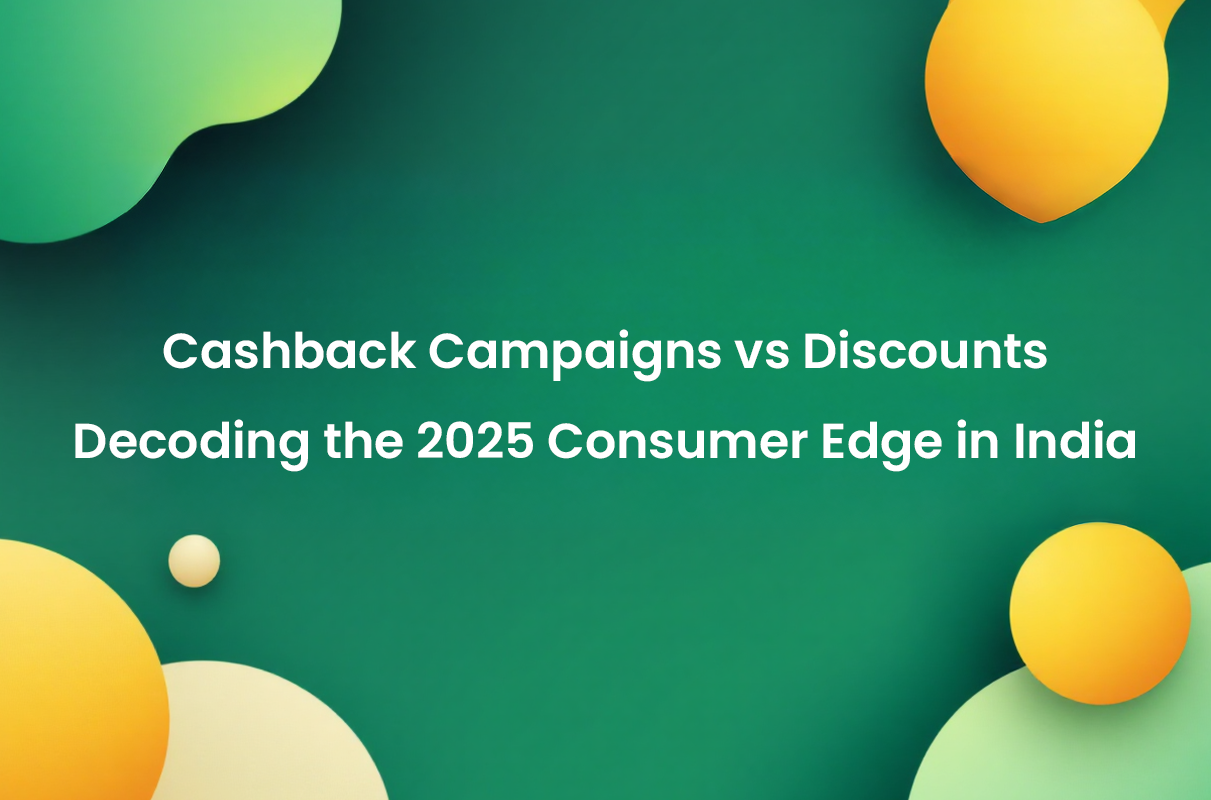
Cashback Campaigns vs Discounts: Decoding the 2025 Consumer Edge in India
As India’s consumer market evolves rapidly toward digital-first engagement, the promotional strategies that marketers adopt must align with shifting preferences and technology trends. Among these strategies, cashback campaigns are increasingly outshining traditional discounts, particularly in driving online shopping and customer loyalty. However, both remain indispensable tools when used thoughtfully in combination.
Consumer behavior in India shows a compelling tilt towards cashback offers. Recent studies indicate that 50% of Indian consumers cite cashback as a key motivator for online purchases, slightly higher than the 46% who prioritize discounts. This preference is most pronounced among younger, metro-based shoppers who value the tangible, wallet-friendly benefits cashback delivers. Conversely, older segments like Gen X still retain a strong affinity for discounts. This generational split suggests that a hybrid strategy addressing diverse consumer needs is optimal.
From a business standpoint, cashback adoption in India has surged with over 22% of online purchases involving cashback incentives. The festive seasons and large sale events see concerted use of combined discounts and cashback mechanisms, which have proven to amplify average order values and customer retention. RewardPort’s experience aligns with these insights: our clients leveraging dual approaches — integrating cashback rewards with targeted discounts — achieve superior engagement and repeat business.
In the channel and trade marketing domain, cashback outpaces discounts by offering faster, more trackable digital payouts, enhancing dealer and retailer incentives programs through real-time rewards. This digital agility supports more personalized reward experiences, an area RewardPort specializes in through modular plug-and-play solutions such as Freebucks points and RewardOne gift voucher engines, which facilitate instant redemption and multilayered reward structures.
The 2025 playbook for promotions in India includes embracing cashback as a cornerstone, especially in high-growth categories like electronics, fashion, and digital services, where consumer responsiveness is highest. Discounts retain their power for price-sensitive groups and initial product penetration but achieve best results when layered with cashback and gamification elements. RewardPort’s catalog, featuring OTT subscriptions, movie tickets, dining, and travel vouchers, supports these mixed reward strategies, delivering experiential value alongside monetary incentives.
Moreover, experiential and wellness rewards are gaining traction as consumers look beyond immediate savings to enrich their lifestyle, a trend RewardPort addresses with rewards such as holiday gift certificates and spa/salon vouchers. Programs incorporating these elements alongside cashback create compelling, differentiated value propositions that resonate with premium segments and foster long-term loyalty.
In sum, cashback campaigns are not merely a fad but a transformative force in India’s consumer promotions landscape for 2025 and beyond. Integrated with discounts and digital engagement tools, cashback drives measurable growth, repeat purchase behavior, and enhanced partnership outcomes. RewardPort stands ready with proven, scalable solutions to help B2B marketers, trade leaders, and HR/channel managers effectively navigate this dynamic landscape and unlock the full potential of their promotions strategies.

The ₹20 Secret: How a Simple Reward Turned Shoppers into Repeat Buyers
In the world of packaged foods, the retail shelf is a battlefield.
Every pack of flour, grains, or ready-to-cook mix is fighting for the same thing—your attention. And here’s the hard truth: most shoppers don’t think twice before switching brands if another one offers a better deal that day.
For brands in this space, loyalty is hard-won and easily lost. Margins are slim, product differentiation is minimal, and marketing budgets rarely stretch to extravagant promotions.
So, how do you make shoppers not just buy once—but keep coming back?
The Problem: Loyalty in a Low-Differentiation Market
The packaged foods category is a classic case of commoditization. Products are interchangeable, and brand switching is rampant. Even when consumers try a new brand and like it, the pull of the next price drop can be too strong to resist.
The challenge? Build brand stickiness without burning a hole in the budget.
The Breakthrough: Value at the Right Moment
The solution wasn’t about flashy giveaways or grand sweepstakes. It was about giving shoppers a reason to choose the brand again—and to do it now.
We created a direct-to-consumer cashback offer that was simple, transparent, and impossible to miss. Here’s how it worked:
- On-Pack Attention Grab: Bold callouts right on the packaging, visible the moment a shopper picked it up.
- Instant Digital Redemption: Scan, submit, and claim ₹20 cashback—right from a mobile phone.
- Assured Value: No luck draws. No “maybe you’ll win.” Every purchase came with a guaranteed reward.
This wasn’t just a promotional gimmick. It was a way to connect with consumers at the exact decision-making point—the store shelf—and give them immediate, tangible value.
Why It Worked
- Instant Gratification Wins: In a low-loyalty market, consumers respond strongly to rewards they can enjoy immediately.
- Simplicity Drives Participation: No complicated forms or delayed payouts—just a quick mobile process.
- Assured Rewards Build Trust: Every customer knew they’d get something back, making the brand feel generous and consumer-focused.
The Ripple Effect
Within weeks, the brand saw:
- A noticeable spike in secondary sales.
- Redemption rates that showed real consumer excitement.
- A stronger “value-first” perception that positioned it ahead of competitors.
The Takeaway for FMCG Marketers
In categories where loyalty is elusive, you don’t always need a massive prize to make an impact.
Sometimes, all it takes is a small, assured reward delivered instantly—right when the shopper is making a choice.
Because when consumers feel rewarded, they remember the brand that made them feel that way. And more often than not, they come back for more.
If you’re in FMCG and battling brand-switching, it might be time to trade big campaigns for small, smart rewards that work harder.
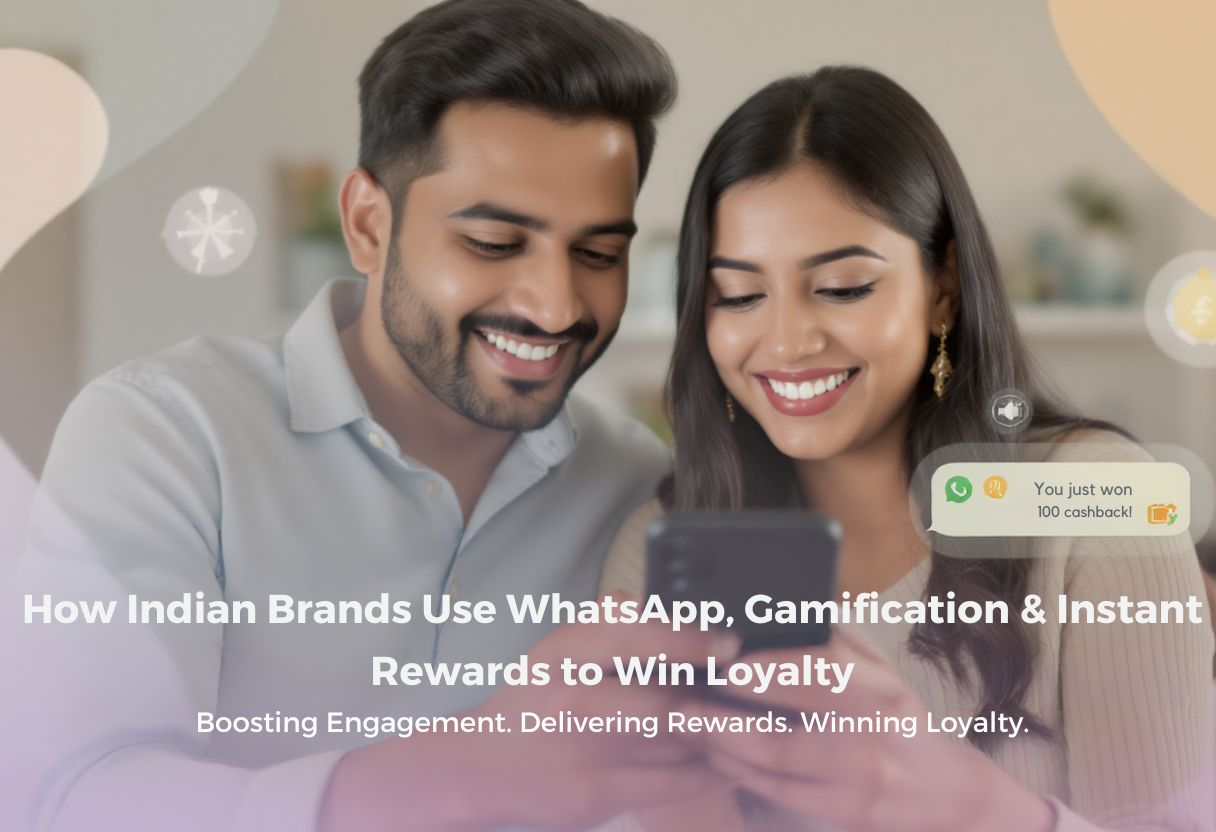
Consumer Promotion Strategies for Indian Brands: WhatsApp, Gamification, and Instant Rewards
The consumer promotion landscape in India has undergone a radical transformation. Traditional discount coupons and newspaper advertisements have given way to sophisticated, digitally-native strategies that leverage India’s unique mobile-first ecosystem. With over 487 million WhatsApp users and a population increasingly comfortable with digital interactions, Indian brands are discovering that successful promotions must be instant, interactive, and deeply integrated into consumers’ daily digital habits.
This shift isn’t just about moving online—it’s about understanding that modern Indian consumers expect promotions to be experiences, not interruptions. Brands that master this new paradigm are seeing extraordinary results: 340% higher engagement rates, 89% better conversion from awareness to purchase, and customer acquisition costs that are 67% lower than traditional methods.
The stakes are enormous. In a market where consumer attention spans average just 8 seconds and brand loyalty is increasingly fragile, promotions have evolved from simple discounting tools to sophisticated relationship-building engines that create lasting emotional connections while driving immediate sales results.
The Death of Traditional Consumer Promotions
Traditional promotion strategies that worked in pre-digital India are failing spectacularly in today’s hyperconnected marketplace. Print coupons, mass media contests, and generic discount offers are generating diminishing returns while consumers become increasingly sophisticated in their expectations.
Why Traditional Promotions No Longer Work:
Mass market approaches that ignore individual preferences and behaviors. One-way communication that doesn’t allow for interaction or engagement. Complex redemption processes that frustrate digitally-native consumers. Delayed gratification that conflicts with instant-everything expectations. Generic rewards that feel impersonal and irrelevant.
The Harsh Reality:
- 73% of consumers ignore traditional promotional materials
- 81% never redeem coupons from newspapers or magazines
- 69% find mass-market promotions irrelevant to their needs
- 84% prefer brands that offer instant, digital rewards
- 76% are more likely to engage with promotions that feel personalized
These statistics reveal a fundamental disconnect between how brands think about promotions and what actually influences consumer behavior in modern India.
Understanding the New Indian Consumer Mindset
Mobile-First Expectations
Indian consumers now expect all brand interactions to work seamlessly on mobile devices. This goes beyond mobile-responsive websites to include promotions that are designed specifically for mobile consumption, sharing, and participation. The most successful promotions feel native to the mobile experience rather than adapted from desktop concepts.
Instant Gratification Culture
The digital economy has conditioned consumers to expect immediate results. Successful promotions now provide instant feedback, immediate rewards, or at minimum, immediate confirmation that participation was successful. Delayed gratification only works when the reward is significantly valuable and the wait time is clearly communicated.
Social Validation Needs
Modern promotions must account for consumers’ desire to share their experiences and achievements. The most effective campaigns include built-in social sharing mechanisms that make participation feel rewarding both individually and socially. Consumers want promotions that make them look smart, successful, or early adopters to their social networks.
Value Beyond Discounts
While price consciousness remains important in India, consumers increasingly value experiences, convenience, exclusive access, and personal recognition over simple monetary discounts. Brands that focus solely on price-based promotions miss opportunities to build deeper relationships and emotional connections.
Trust and Security Concerns
With increasing digital literacy comes greater awareness of privacy and security issues. Successful promotions must clearly communicate data usage, provide transparent terms and conditions, and use trusted platforms or partnerships to build consumer confidence in participation.
WhatsApp: The Promotion Platform Revolution
WhatsApp has emerged as India’s most powerful consumer promotion platform, fundamentally changing how brands can reach, engage, and convert customers. With 487 million active users spending an average of 38 minutes daily on the platform, WhatsApp offers unparalleled reach and intimacy for promotional campaigns.
Why WhatsApp Dominates Indian Promotions
Universal Accessibility: WhatsApp works on feature phones, smartphones, and even through WhatsApp Web, ensuring promotions can reach consumers across all economic segments and technology adoption levels.
High Trust Environment: Consumers trust WhatsApp more than email, SMS, or social media for brand communications because the platform feels personal and secure rather than commercial and intrusive.
Rich Media Capabilities: Modern WhatsApp promotions can include images, videos, voice messages, documents, and interactive elements that create engaging experiences rather than simple text-based communications.
Viral Potential: WhatsApp’s sharing mechanisms enable promotions to spread organically through personal networks, creating authentic word-of-mouth marketing that’s more trusted than brand-generated content.
Advanced WhatsApp Promotion Strategies
Conversational Commerce Integration: Brands are using WhatsApp Business API to create interactive shopping experiences where consumers can browse products, ask questions, receive personalized recommendations, and complete purchases without leaving the WhatsApp environment.
Gamified Engagement Sequences: Multi-step promotional campaigns that guide consumers through progressive challenges, quizzes, or activities over several days or weeks, building anticipation and sustained engagement.
Personalized Offer Delivery: AI-powered systems that analyze consumer behavior, purchase history, and preferences to deliver highly targeted promotional offers through WhatsApp at optimal times for individual users.
Community Building Promotions: Creating WhatsApp groups around specific interests, products, or geographic areas where promotions feel like community benefits rather than marketing messages.
Instant Customer Service Integration: Promotions that seamlessly connect to customer service channels, allowing consumers to get immediate help with redemption, technical issues, or additional questions without friction.
Implementation Best Practices
Opt-In Compliance: Ensuring all promotional communications follow WhatsApp’s business policies and local regulations regarding consumer consent and data privacy.
Message Frequency Management: Balancing promotional frequency to maintain engagement without causing message fatigue or prompting users to block business numbers.
Content Optimization: Creating messages that work well within WhatsApp’s character limits and media constraints while maintaining brand voice and promotional effectiveness.
Response Time Standards: Establishing systems to respond to consumer queries and interactions within WhatsApp’s recommended response timeframes to maintain account status and consumer satisfaction.
Gamification: Making Promotions Addictive
Gamification transforms passive promotional participation into active, engaging experiences that consumers genuinely enjoy. By incorporating game design elements into promotional campaigns, brands create psychological rewards that extend far beyond the monetary value of prizes or discounts.
The Psychology of Gamified Promotions
Achievement Motivation: Consumers are motivated by progress indicators, level completions, badge collections, and other achievement markers that provide psychological satisfaction independent of material rewards.
Social Competition: Leaderboards, challenges between friends, and community competitions tap into natural competitive instincts while creating social proof and FOMO (fear of missing out) dynamics.
Variable Reward Schedules: Random reward timing and amounts create addictive engagement patterns similar to gaming and gambling, keeping consumers engaged even when immediate rewards aren’t guaranteed.
Autonomy and Choice: Allowing consumers to choose their participation path, customize their experience, or select their preferred rewards creates a sense of control that increases engagement and satisfaction.
Mastery Development: Progressive challenges that help consumers develop skills, knowledge, or expertise create ongoing value that extends beyond the promotional period.
Successful Gamification Mechanics for Indian Brands
Scratch and Win Digital Cards: Modern implementations use augmented reality, interactive animations, and social sharing features to make digital scratch cards feel more engaging than physical alternatives.
Spin the Wheel Promotions: Customizable digital wheels with varying prize segments, special bonus rounds, and progressive jackpots that increase excitement and encourage repeated participation.
Quiz-Based Competitions: Educational quizzes about products, industry knowledge, or general topics that provide value to participants while generating qualified leads and customer insights for brands.
Collection and Trading Games: Digital collectibles, virtual badges, or trading card systems that encourage sustained engagement over time and create communities of participants who trade and share achievements.
Progress-Based Rewards: Tiered systems where consumers unlock increasingly valuable rewards through continued engagement, purchases, or social sharing activities.
Location-Based Challenges: Geo-fenced promotions that reward consumers for visiting specific locations, checking in at stores, or participating in regional events.
Case Study: Gamification Success in FMCG
A major Indian snack food brand implemented a gamified promotion that combined WhatsApp engagement with augmented reality gaming. Consumers could scan product packages to unlock AR games on their phones, earn points through gameplay, and redeem rewards through WhatsApp conversations with the brand.
Campaign Mechanics:
- Package scanning unlocked different mini-games based on product variants
- Daily challenges encouraged repeated engagement across multiple products
- Social sharing of high scores provided bonus points and friend referrals
- WhatsApp chatbot managed point tracking, reward redemption, and customer service
Results After 3 Months:
- 67% increase in purchase frequency among participants
- 89% social sharing rate for game achievements
- 156% growth in brand awareness among target demographic
- 34% reduction in customer acquisition costs compared to traditional advertising
- 78% of participants continued engaging post-campaign through WhatsApp updates
Success Factors: The campaign succeeded because it provided genuine entertainment value, used technology in innovative but accessible ways, and created ongoing relationships through WhatsApp rather than ending at campaign completion.
Instant Rewards: The Need for Speed
The expectation for instant gratification has fundamentally changed how promotions must be structured and delivered. Modern consumers expect immediate confirmation, instant rewards, or at minimum, real-time feedback on their promotional participation.
Types of Instant Rewards That Work
Digital Coupons and Vouchers: Immediately delivered discount codes, cashback offers, or gift vouchers that can be used instantly online or saved for future purchases.
Loyalty Points and Credits: Instant addition of points to customer accounts with immediate visibility of point balances and available redemption options.
Exclusive Content Access: Immediate access to premium content, early product previews, exclusive videos, or members-only information that provides instant value.
Social Recognition: Instant badges, certificates, or social media recognition that provides immediate psychological rewards and social proof.
Surprise and Delight Rewards: Unexpected bonus rewards that are delivered instantly when consumers take specific actions or reach certain milestones.
Practical Benefits: Instant utility rewards like data top-ups, bill payment credits, or service upgrades that provide immediate practical value to consumers’ daily lives.
Technology Infrastructure for Instant Rewards
Real-Time Processing Systems: Backend infrastructure capable of processing promotional participation, validating entries, and delivering rewards within seconds of consumer action.
API Integration Networks: Connections with payment processors, loyalty platforms, digital wallet providers, and partner reward systems that enable instant reward delivery across multiple channels.
Automated Validation: Systems that can instantly verify consumer eligibility, prevent fraud, and ensure reward delivery compliance without manual intervention.
Cross-Platform Synchronization: Infrastructure that ensures instant rewards appear consistently across mobile apps, websites, email, SMS, and other consumer touchpoints.
Measuring Instant Reward Effectiveness
Engagement Velocity: Time from promotion awareness to participation, measuring how quickly instant reward promises drive consumer action.
Completion Rates: Percentage of consumers who complete promotional requirements when instant rewards are promised versus delayed rewards.
Repeat Participation: How instant reward experiences influence willingness to participate in future brand promotions.
Social Amplification: Rate at which instant reward recipients share their experiences or refer others to participate.
Platform-Specific Promotion Strategies
Instagram and Facebook Promotions
Visual-First Campaigns: Leveraging Instagram’s visual nature for product showcases, user-generated content contests, and visually appealing reward displays.
Stories and Reels Integration: Using ephemeral content formats for time-sensitive promotions, behind-the-scenes content, and authentic brand interactions.
Influencer Partnership Promotions: Collaborating with micro and macro influencers to create authentic promotional content that feels like personal recommendations rather than advertisements.
Shoppable Posts: Enabling direct purchase from promotional posts, reducing friction between discovery and conversion while maintaining social engagement.
YouTube Promotion Integration
Video-Based Contests: Encouraging user-generated video content around brand themes, products, or challenges with promotional rewards for participation and winners.
Pre-Roll Promotion Integration: Creating promotional messages that feel native to the YouTube experience rather than disruptive to content consumption.
Creator Partnership Programs: Working with YouTube creators to integrate promotions naturally into their content while maintaining authenticity and audience trust.
Regional Platform Strategies
Vernacular Content Promotions: Creating promotional content in regional languages that resonates with local cultural references and communication styles.
Festival and Regional Event Integration: Timing promotions around local festivals, cultural events, and regional celebrations for maximum relevance and participation.
Local Influencer Partnerships: Collaborating with regional influencers who have deep connections to local communities and cultural contexts.
Measurement and Analytics for Modern Promotions
Key Performance Indicators
Engagement Metrics:
- Participation Rate: Percentage of exposed consumers who actively engage with promotions
- Completion Rate: Percentage of participants who fulfill all promotional requirements
- Time to Participate: Average time between promotion discovery and initial engagement
- Session Duration: Average time spent interacting with promotional content or activities
Conversion Metrics:
- Immediate Conversion: Purchases made during or immediately after promotional participation
- Delayed Conversion: Purchases made within 30-90 days of promotional engagement
- Cross-Sell Success: Additional products purchased beyond the promoted items
- Customer Lifetime Value Impact: Long-term value changes for promotion participants vs. non-participants
Social and Viral Metrics:
- Social Sharing Rate: Percentage of participants who share promotional content or results
- Referral Generation: New participants acquired through existing participant referrals
- User-Generated Content: Volume and quality of consumer-created content around promotions
- Brand Mention Sentiment: Emotional tone of social mentions generated by promotional campaigns
Technical Performance:
- Platform Reliability: Uptime and technical performance during high-engagement periods
- Mobile Optimization: User experience quality across different mobile devices and operating systems
- Load Times: Speed of promotional page loading and interaction responsiveness
- Cross-Platform Consistency: Uniform experience quality across different promotional touchpoints
Advanced Analytics Implementation
Real-Time Dashboard Creation: Implementing analytics systems that provide live updates on promotional performance, allowing for immediate optimization and issue resolution during active campaigns.
Predictive Analytics Integration: Using machine learning to predict which consumers are most likely to participate, convert, or become long-term customers based on early engagement patterns.
A/B Testing Frameworks: Systematic testing of different promotional elements (rewards, messaging, mechanics, timing) to optimize performance while campaigns are running.
Attribution Modeling: Understanding the complete customer journey from initial promotion exposure through final conversion, including all touchpoints and influences.
Regional and Cultural Customization
North India Promotion Preferences
Festival Integration: Leveraging Diwali, Holi, Karva Chauth, and other regional festivals for themed promotions that feel culturally relevant rather than commercially imposed.
Family-Oriented Rewards: Creating promotions that benefit entire families or acknowledge family decision-making processes common in North Indian purchase behavior.
Status and Recognition Elements: Including social recognition, exclusive access, or premium treatment that appeals to status consciousness prevalent in many North Indian markets.
Vernacular Communication: Using Hindi, Punjabi, and other regional languages in promotional materials while maintaining brand voice and message clarity.
South India Customization
Educational Value Integration: Including learning elements, skill development opportunities, or knowledge-based challenges that appeal to the region’s emphasis on education and self-improvement.
Technology Adoption: Leveraging higher technology adoption rates in South Indian markets for more sophisticated digital promotional mechanics and platforms.
Regional Festival Alignment: Coordinating with festivals like Onam, Pongal, Ugadi, and regional celebrations for maximum cultural relevance and participation.
Local Partnership Integration: Collaborating with respected local institutions, educational organizations, or community groups to add credibility and cultural appropriateness.
West India Strategies
Business and Entrepreneurship Themes: Creating promotions that appeal to the entrepreneurial spirit and business acumen common in Maharashtra and Gujarat markets.
Innovation and Modernity: Emphasizing cutting-edge technology, innovative approaches, and forward-thinking elements in promotional design and messaging.
Regional Language Integration: Incorporating Marathi, Gujarati, and other regional languages while maintaining sophisticated, business-appropriate communication styles.
Economic Value Focus: Highlighting practical benefits, cost savings, and economic advantages alongside entertainment and social elements.
East India Approaches
Cultural and Artistic Integration: Incorporating elements of Bengal’s rich cultural heritage, artistic traditions, and intellectual discourse into promotional themes and activities.
Community and Social Elements: Emphasizing collective participation, community benefits, and social connection aspects that resonate with regional social structures.
Intellectual Engagement: Including debate, discussion, creative expression, or intellectual challenge elements that appeal to the region’s appreciation for mental stimulation.
Traditional-Modern Balance: Blending respect for traditional values with modern promotional mechanisms and technology integration.
Technology Infrastructure for Modern Promotions
Cloud-Based Promotion Platforms
Scalability Requirements: Infrastructure that can handle sudden traffic spikes during viral promotional moments without performance degradation or system failures.
Multi-Channel Integration: Platforms that seamlessly connect promotional experiences across mobile apps, websites, social media, messaging platforms, and offline touchpoints.
Real-Time Data Processing: Systems capable of instant data collection, analysis, and response to enable dynamic promotional optimization and instant reward delivery.
Security and Compliance: Infrastructure that protects consumer data, prevents fraud, and complies with Indian data protection regulations and international standards.
Artificial Intelligence Integration
Personalization Engines: AI systems that analyze individual consumer behavior, preferences, and history to customize promotional offers, timing, and messaging for maximum relevance and effectiveness.
Predictive Analytics: Machine learning models that forecast consumer response patterns, optimal timing, and likely conversion outcomes to improve promotional ROI.
Fraud Detection: AI-powered systems that identify suspicious participation patterns, prevent gaming of promotional systems, and protect against fraudulent reward claims.
Natural Language Processing: Technology that enables sophisticated chatbot interactions, sentiment analysis of consumer feedback, and automated response generation for customer service integration.
Blockchain and Cryptocurrency Integration
Transparent Reward Systems: Blockchain-based point systems that provide tamper-proof reward tracking and enable consumer confidence in promotional fairness and transparency.
Smart Contract Automation: Automated reward delivery systems that execute promotional rules without manual intervention while ensuring compliance and preventing disputes.
Cross-Brand Loyalty Integration: Blockchain platforms that enable reward points or benefits to be shared across multiple brands or converted between different loyalty systems.
NFT and Digital Collectible Rewards: Unique digital assets as promotional rewards that provide ongoing value and potential appreciation while creating collector communities around brands.
Legal and Regulatory Considerations
Compliance Framework
Consumer Protection Laws: Ensuring promotional terms and conditions comply with Indian consumer protection regulations and provide clear, enforceable guidelines for participation and reward delivery.
Data Privacy Regulations: Implementing data collection and usage practices that comply with emerging Indian data protection laws and international privacy standards.
Taxation Implications: Understanding tax responsibilities for both brands and consumers regarding promotional rewards, prizes, and benefits to prevent legal complications.
Advertising Standards: Adhering to Indian advertising standards authority guidelines for promotional claims, disclaimers, and truth in advertising requirements.
Terms and Conditions Best Practices
Clear Language Requirements: Writing promotional terms in simple, understandable language that clearly explains participation requirements, reward structures, and limitation conditions.
Dispute Resolution Mechanisms: Establishing clear processes for handling consumer complaints, technical issues, and reward delivery problems to maintain consumer trust and legal compliance.
Geographic and Demographic Restrictions: Clearly communicating any limitations on promotional eligibility based on location, age, employment, or other factors to prevent confusion and legal issues.
Intellectual Property Protection: Protecting brand assets while respecting consumer privacy and user-generated content rights throughout promotional campaigns.
Future Trends in Indian Consumer Promotions
Emerging Technologies
Augmented Reality Integration: AR-powered promotions that blend digital rewards with physical world experiences, creating immersive brand interactions that feel magical rather than commercial.
Voice Assistant Integration: Promotions that work through Alexa, Google Assistant, and local language voice platforms, enabling hands-free participation and voice-activated reward redemption.
Internet of Things (IoT) Connectivity: Smart device integration that enables automatic promotional participation based on product usage, location, or behavior patterns without requiring conscious consumer action.
5G-Enabled Experiences: High-speed connectivity enabling real-time multiplayer promotional games, live streaming integration, and data-intensive interactive experiences.
Sustainability and Purpose Integration
Environmental Impact Rewards: Promotions that reward sustainable behaviors, eco-friendly choices, or environmental conservation actions while promoting brand values and social responsibility.
Social Impact Integration: Campaigns where consumer participation contributes to charitable causes, community development, or social good initiatives while providing personal rewards.
Circular Economy Promotions: Reward systems that encourage product recycling, reuse, or sustainable consumption patterns while building brand loyalty and environmental consciousness.
Personalization Evolution
Hyper-Individualization: AI-driven systems that create unique promotional experiences for each consumer based on their complete digital footprint, preferences, and predictive behavior models.
Contextual Awareness: Promotions that adapt in real-time based on current consumer context including location, time, weather, mood indicators, and recent activity patterns.
Predictive Engagement: Systems that anticipate consumer needs and proactively offer relevant promotions before consumers actively seek them, creating helpful rather than intrusive experiences.
Implementation Roadmap for Brands
Phase 1: Foundation Setting (Months 1-2)
Technology Audit: Evaluate current promotional technology capabilities and identify gaps in infrastructure, integration, and analytics systems.
Consumer Research: Conduct detailed analysis of target audience digital behavior, platform preferences, and promotional response patterns through surveys, interviews, and behavioral data analysis.
Competitive Analysis: Study successful promotional campaigns in similar industries and markets to identify best practices and differentiation opportunities.
Regulatory Review: Ensure all proposed promotional strategies comply with current and anticipated regulatory requirements for data privacy, consumer protection, and advertising standards.
Phase 2: Strategy Development (Months 2-3)
Platform Selection: Choose optimal promotional platforms based on target audience behavior, technical capabilities, and integration requirements with existing brand systems.
Campaign Design: Create detailed promotional mechanics, reward structures, and engagement flows that balance consumer appeal with business objectives and technical feasibility.
Content Creation: Develop promotional messaging, visual assets, and interactive elements that work effectively across chosen platforms while maintaining brand consistency.
Integration Planning: Design connections between promotional systems and existing customer relationship management, loyalty, and analytics platforms for seamless data flow and customer experience.
Phase 3: Pilot Testing (Months 3-4)
Limited Launch: Execute small-scale promotional campaigns with select customer segments to test technical performance, consumer response, and operational processes.
Performance Monitoring: Track key metrics, identify technical issues, and gather consumer feedback to optimize promotional mechanics and delivery systems.
Iteration and Improvement: Refine promotional strategies based on pilot results, addressing technical problems and improving consumer experience elements.
Scale Preparation: Prepare infrastructure, staffing, and processes for full-scale promotional campaigns based on pilot learnings and performance projections.
Phase 4: Full Implementation (Months 4-6)
Campaign Launch: Execute comprehensive promotional campaigns across all selected platforms with full marketing support and consumer communication strategies.
Real-Time Optimization: Monitor performance continuously and make real-time adjustments to promotional elements, messaging, and targeting to maximize effectiveness.
Customer Service Integration: Ensure seamless customer support for promotional participants, technical issues, and reward redemption questions through all communication channels.
Performance Analysis: Conduct comprehensive analysis of promotional results, ROI, consumer behavior changes, and long-term impact on brand relationships and sales performance.
Conclusion: The Future of Indian Consumer Promotions
Consumer promotions in India have evolved from simple discounting mechanisms to sophisticated relationship-building tools that create genuine value for both brands and consumers. The integration of WhatsApp, gamification, and instant rewards represents just the beginning of this transformation.
Successful brands understand that modern promotions must be experiences, not interruptions. They must provide immediate value while building long-term relationships. They must leverage technology to create magic while maintaining human connection and cultural relevance.
The brands that will dominate India’s consumer markets in the coming decade are those that master the art of promotional experiences—campaigns that consumers actively seek out, enthusiastically participate in, and voluntarily share with their social networks. These promotions don’t just drive immediate sales; they create lasting emotional connections that transcend traditional brand loyalty.
As technology continues to evolve and consumer expectations continue to rise, the bar for promotional excellence will only get higher. Brands that invest now in understanding these new dynamics, building the right technology infrastructure, and creating genuinely valuable consumer experiences will find themselves with sustainable competitive advantages that extend far beyond any individual campaign.
The question isn’t whether to embrace these new promotional strategies—the question is how quickly brands can adapt their thinking, technology, and execution to meet consumers where they are today while anticipating where they’ll be tomorrow.
Ready to revolutionize your consumer promotion strategy? RewardPort specializes in designing and implementing cutting-edge promotional campaigns that combine WhatsApp engagement, gamification, and instant rewards to create extraordinary consumer experiences that drive both immediate results and long-term brand loyalty.
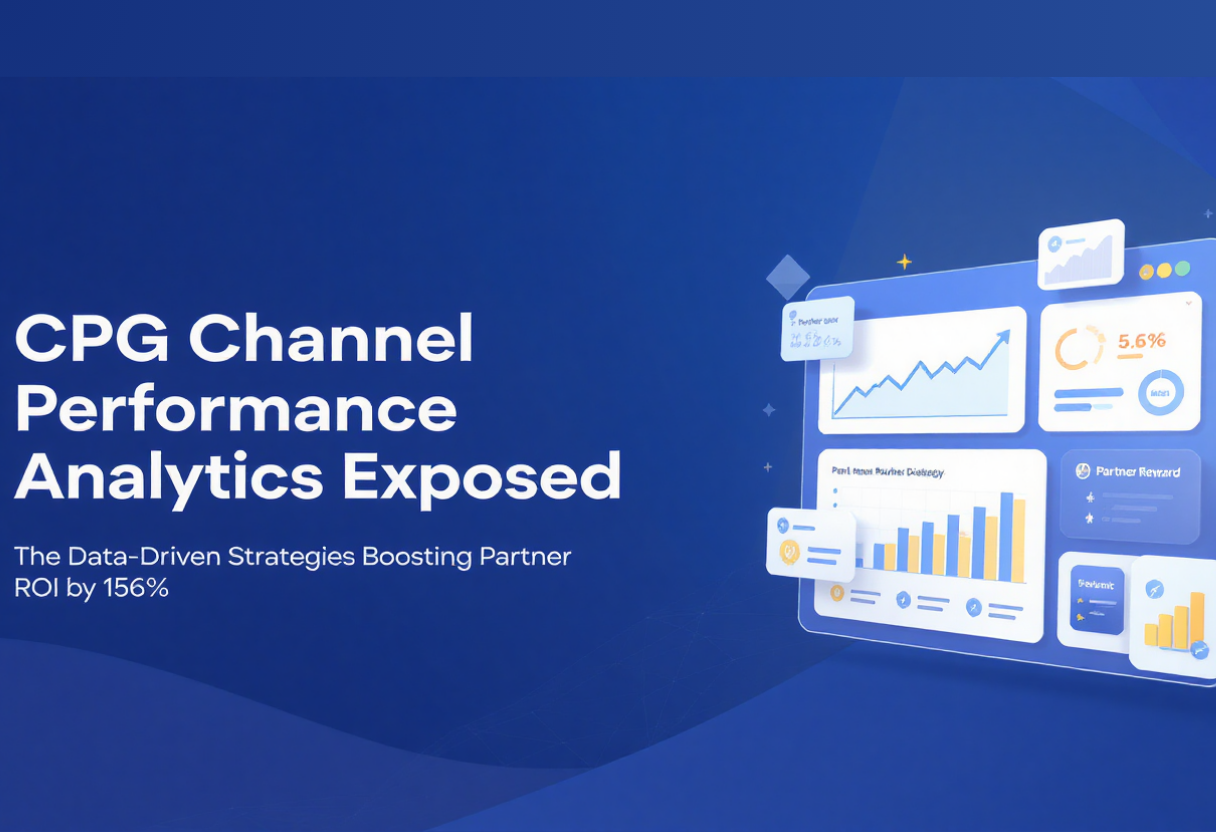
CPG Channel Performance Analytics Exposed: The Data-Driven Strategies Boosting Partner ROI by 156%
The Consumer Packaged Goods (CPG) industry is undergoing a revolutionary transformation, and it’s happening in the most unexpected place: the analytics dashboard. While brands have historically relied on gut instinct and basic sales metrics to manage their channel partnerships, industry leaders are now harnessing sophisticated channel performance analytics to unlock unprecedented partner ROI growth.
The numbers speak for themselves. CPG companies implementing advanced analytics-driven partner programs are seeing an average 156% increase in partner ROI, with some reporting gains as high as 240%. But these aren’t just statistics—they represent a fundamental shift in how the industry approaches B2B loyalty solutions and partner engagement strategies for 2025-26.
The Analytics Awakening in CPG
For decades, CPG channel management operated in a data vacuum. Brands would distribute products, offer basic incentives, and hope for the best. Traditional metrics like sales volume and basic margin calculations provided limited insights into partner behavior, motivation drivers, or optimization opportunities.
Today’s CPG landscape demands precision. With shrinking margins, intensified competition, and evolving consumer demands, brands can no longer afford to operate channel programs based on assumptions. Channel performance analytics has emerged as the secret weapon that separates industry leaders from laggards.
— Channel Director, Fortune 500 CPG Company
The Data Revolution: Beyond Basic Metrics
Modern CPG channel performance analytics extends far beyond traditional sales tracking. Industry pioneers are leveraging multi-dimensional data analysis that encompasses:
Behavioral Analytics: Understanding how partners interact with digital platforms, which incentives drive engagement, and what communication channels yield the highest response rates. Advanced analytics reveal that personalized digital engagement increases partner satisfaction scores by 89%.
Predictive Performance Modeling: Using AI-powered algorithms to identify which partners are likely to exceed targets, which ones need additional support, and which new partners have the highest success potential. This predictive approach has helped leading CPG brands reduce partner churn by 43%.
Real-Time Engagement Scoring: Continuous monitoring of partner engagement across multiple touchpoints, from training completion rates to reward redemption patterns. Companies utilizing engagement scoring report 67% higher partner retention rates.
ROI Attribution Analysis: Sophisticated tracking that connects specific incentive investments to measurable business outcomes, enabling precise program optimization. This granular analysis has allowed top performers to reallocate incentive budgets for maximum impact.
The Gamification Integration Game-Changer
2025-26 Trend Alert: Gamified Analytics
Interactive dashboards transforming sales targets into achievement levels are increasing partner engagement by up to 340%
One of the most significant trends for 2025-26 is the integration of gamification elements within analytics-driven partner programs. CPG leaders are discovering that when performance data is presented through gamified experiences, partner engagement skyrockets.
Interactive dashboards that transform sales targets into achievement levels, leaderboards that create healthy competition among regional partners, and milestone celebrations that provide instant recognition are revolutionizing the partner experience. A major beverage CPG company reported that gamifying their analytics dashboard increased daily partner platform usage by 340%.
Instant rewards triggered by real-time performance analytics are proving particularly effective. When partners can see their achievements immediately reflected in both their performance scores and reward balances, motivation and satisfaction levels increase dramatically.
AI-Powered Insights: The 2025-26 Advantage
Artificial Intelligence is transforming how CPG companies interpret and act on channel performance data. Machine learning algorithms analyze vast datasets to identify patterns invisible to human analysts, providing actionable insights that drive strategic decisions.
Predictive Analytics: AI systems can forecast partner performance trends, seasonal variations, and market opportunities with remarkable accuracy. One household goods CPG brand uses AI predictions to proactively adjust partner incentives, resulting in 78% more consistent quarterly results.
Personalization at Scale: Advanced algorithms analyze individual partner preferences, performance history, and market conditions to create personalized incentive packages. This level of customization, previously impossible to manage manually, is driving unprecedented partner satisfaction levels.
Automated Optimization: AI continuously monitors program performance and automatically adjusts parameters to maximize ROI. This “always-on” optimization approach ensures that partner programs remain effective even as market conditions change.
Multi-Channel Loyalty: The Integration Imperative
Modern CPG companies operate through diverse channel networks including traditional retail, e-commerce platforms, wholesale distributors, and direct-to-consumer channels. Multi-channel loyalty programs powered by comprehensive analytics ensure consistent partner experiences across all touchpoints.
Leading CPG brands are implementing unified analytics platforms that track partner performance across multiple channels, providing holistic views of partner contributions and enabling coordinated incentive strategies. This integrated approach has proven particularly effective in managing complex partner ecosystems where individual partners may operate across multiple channels.
Experiential Rewards: The Emotional Connection
While data drives decision-making, successful CPG partner programs recognize that emotional connections create lasting loyalty. Analytics-informed experiential travel rewards and unique recognition experiences are becoming increasingly popular for 2025-26.
Top-performing partners are being rewarded with curated travel experiences, exclusive industry events, and VIP access to product launches. Analytics help identify which partners value experiential rewards most highly, ensuring optimal allocation of premium incentive budgets.
Implementation Roadmap: Getting Started
For CPG companies ready to embrace analytics-driven partner programs, industry experts recommend a phased approach:
Phase 1: Data Foundation – Establish comprehensive data collection across all partner touchpoints, ensuring data quality and integration capabilities.
Phase 2: Basic Analytics – Implement fundamental performance tracking and reporting systems, focusing on key metrics that directly impact business outcomes.
Phase 3: Advanced Insights – Deploy AI-powered analytics tools, predictive modeling, and automated optimization systems.
Phase 4: Experience Integration – Incorporate gamification, instant rewards, and experiential elements based on analytical insights.
The Competitive Advantage Reality
CPG companies that delay analytics adoption risk being left behind. Industry research indicates that brands with advanced channel performance analytics capabilities are gaining market share at the expense of competitors still relying on traditional approaches.
The partner experience gap is widening rapidly. Partners who work with analytics-enabled CPG brands report significantly higher satisfaction levels, stronger brand loyalty, and greater willingness to invest in joint growth initiatives.
Future-Proofing Partner Relationships
As we move into 2025-26, the importance of data-driven partner programs will only intensify. Consumer behavior continues evolving, new channels emerge regularly, and competitive pressures increase constantly. CPG companies with robust analytics capabilities will be better positioned to adapt quickly and maintain strong partner relationships.
The most successful CPG brands view channel performance analytics not as a technology investment, but as a strategic imperative that transforms how they understand, engage, and grow with their partners.
The question isn’t whether to embrace analytics-driven partner programs—it’s how quickly you can implement them before competitors gain an insurmountable advantage. The 156% ROI improvement isn’t just a statistic; it’s a preview of what’s possible when data meets partnership strategy in the modern CPG landscape.

